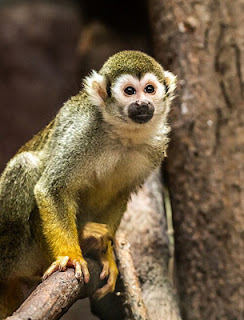In Europe, in particular, there is only so far south you can go before hitting the coastline. This meant that many animals were forced into small areas, some of which may still have been marginal habitat for them, to avoid extinction. These areas are called "refugia", and their small size and isolation were a driver for evolutionary change. Sometimes populations were split apart for so long that they became separate species and, for example, we can date many species of northern birds to this time, even though, for them, the Mediterranean would not have been an issue.
Wednesday, 23 July 2025
How the Lemming Got its Coat
Sunday, 13 July 2025
Delphinids: Dolphins in the Irrawaddy
 |
| Irrawaddy dolphin |
The Irrawaddy dolphin (Orcaella brevirostris) was first described in 1866, from a specimen caught, not in a river, but off the northeast coast of India. We now know that this is at the far western edge of its range, and that it is also found all along the coast from northeast India, around the Malaysian Peninsula, to as far east as southern Vietnam. It is also found further south, around Borneo and along the north coasts of Sumatra and Java. In 1999, a very small population was discovered in the Philippines, living in a couple of isolated bays very far from the remainder of the animal's range, presumably the result of some having been swept away in a storm decades or even centuries before.
Sunday, 6 July 2025
Oligocene (Pt 16): The First Monkeys in South America
.jpg) |
| A modern South American monkey |
The Atlantic was narrower then than it was now, and ocean currents were different, but it's still a remarkable feat. It may also have been a lucky escape, since the African relatives of this first American migrant died out not long after, perhaps outcompeted by the ancestors of today's langurs, baboons, macaques, and apes. In South America, however, its descendants got almost free rein, diversifying into the five families we have today.
